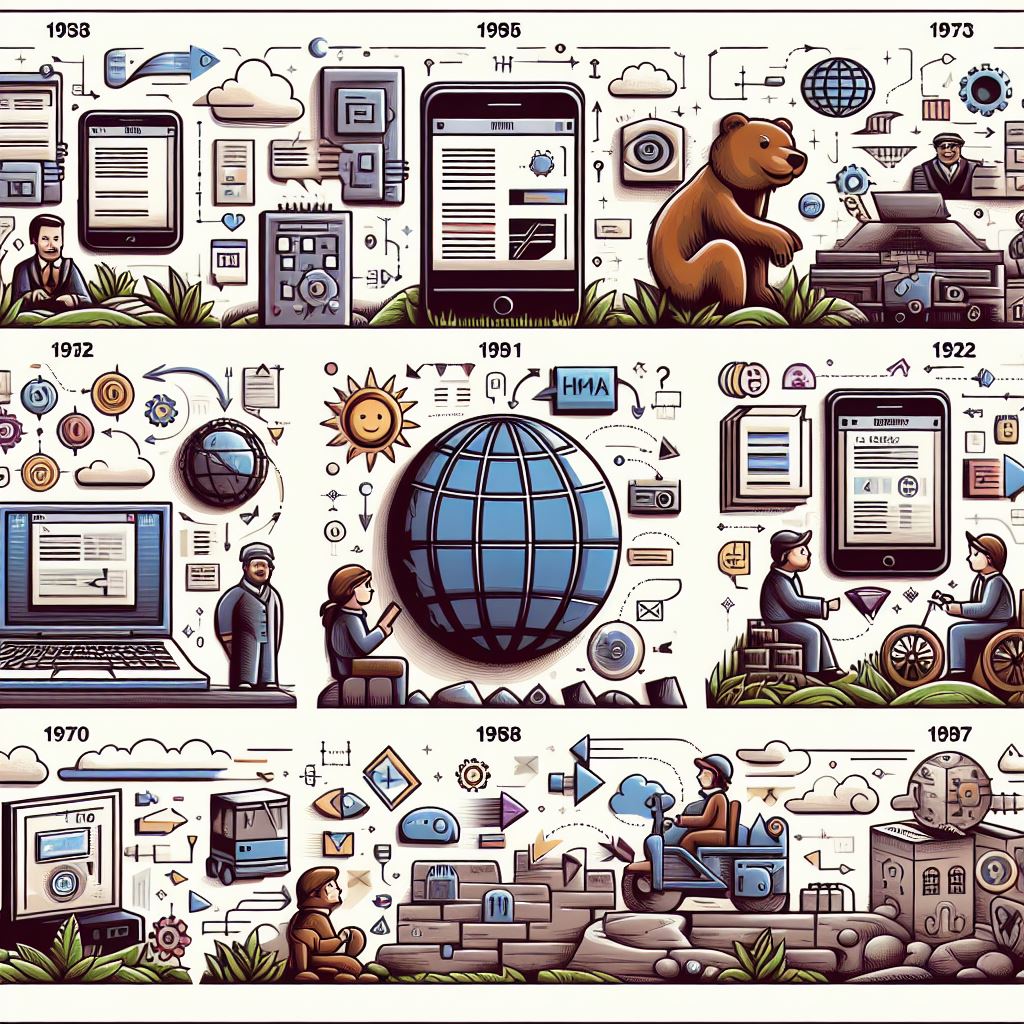The World Wide Web has undergone a remarkable transformation over the years, and at the heart of this evolution lies HyperText Markup Language (HTML). From its humble beginnings to its current sophisticated state, HTML has played a pivotal role in shaping the digital landscape we navigate today.
The Birth of HTML

HTML, developed by Sir Tim Berners-Lee in 1991, was initially a simple markup language designed to link and share documents between scientists at CERN. Little did he know that his creation would become the backbone of the internet.
Standardization and Compatibility
As the web expanded, the need for standardization became evident. The World Wide Web Consortium (W3C) was formed to ensure consistency and compatibility across different browsers. HTML standards were established, allowing developers to create content that could be reliably viewed by users regardless of their chosen browser.
HTML’s Role in Web Development
HTML serves as the skeleton of web pages, providing a structured markup that allows browsers to interpret and display content. It consists of elements and tags, each serving a specific purpose in organizing and presenting information.
Tips for Effective HTML Coding
- Semantic HTML: Use semantic elements like
<header>,<nav>,<article>,<section>,<footer>, etc. These elements add meaning to your content and improve accessibility. - Clean and Indented Code: Maintain well-organized and indented code for better readability. Consistent indentation makes it easier to troubleshoot and collaborate with others.
- Responsive Design: Design your web pages to be responsive, ensuring a seamless user experience across various devices and screen sizes. Use media queries and flexible grids to achieve this.
- SEO Optimization: Utilize proper HTML tags and attributes to enhance search engine optimization (SEO). Title tags, meta descriptions, and alt attributes for images contribute to better visibility on search engines.
- The <picture> Tag: Display images responsively with the
<picture>tag.Include one or more<source>tags and one<img>tag for flexibility.

- The <figure> Tag: Utilize the
<figure>tag to markup images on your webpage. Enhance it further by including a description using the<figcaption>element. - The <progress> Tag: Represent the progress of a task using the
<progress>tag. Avoid confusion with the<meter>tag, which represents a gauge.

- The <map> Tag: Define client-side image maps with the
<map>tag. Create clickable areas on images, such as a Solar System map. - The <video> Tag: Embed a media player for video playback using the
<video>tag. Consider hosting videos on platforms like AWS S3 for professionalism. Specify attributes like width, height, autoplay, loop, and controls for customization.

Cool Projects with HTML
- Personal Portfolio Website: Showcase your skills and projects by creating a personal portfolio. Include sections for your resume, projects, and contact information.
- Interactive Forms: Build interactive and user-friendly forms for feedback, surveys, or registration using HTML form elements.
- HTML5 Canvas Games: Explore the creative side of HTML by developing simple games using the HTML5
<canvas>element. This is a great way to combine coding and design skills. - Embedded Multimedia: Enhance user engagement by incorporating multimedia elements like audio and video. HTML provides easy-to-use tags for seamless integration.
Conclusion

HTML’s transformation from a CERN project to the cornerstone of the internet exemplifies its versatility and enduring significance. As web technologies progress, HTML retains its status as an indispensable skill for aspiring web developers. Mastering HTML and adhering to best practices empower developers to contribute to a web environment that not only captivates visually but also ensures accessibility and functionality for users worldwide.
So, gear up! Join us on this journey towards a future brimming with innovation. Stay tuned for our upcoming posts as we delve into an era marked by extraordinary achievements.
Stay connected—Happy coding! Nice Future Inc. will be back soon!
Subscribe to our newsletter!




